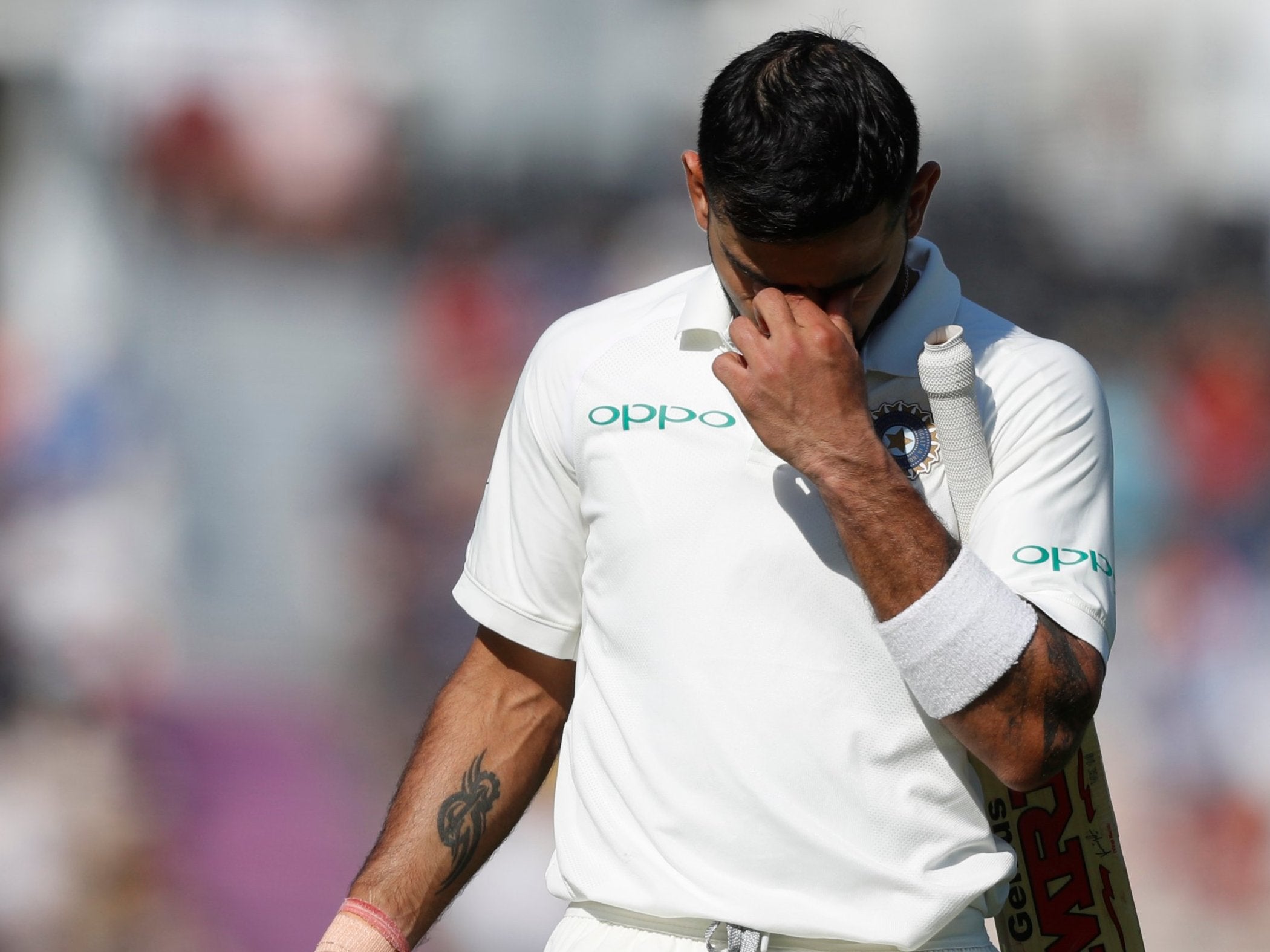As Test series go, England vs India has been a riot of fun - but good luck making any sense of it
A series that was billed as the apex of India’s rise to greatness, and dismissed after two games as a damp mismatch that portended the death of Test cricket, ultimately ended up as neither
What a strange, asymmetrical series this has been. Cricket historians of the future will pore over it in bemusement, studying the individual pieces and yet utterly at a loss as to how they explain the whole. Those who remember it will recall the emotions it inspired, yet be astonished to discover that England won it 4-1.
`The baseline facts are these: India have scored more centuries and taken more five-wicket hauls. The series’ top run-scorer (Virat Kohli), its two highest innings and arguably its four best knocks (Kohli at Edgbaston, Cheteshwar Pujara at Southampton, KL Rahul and Rishabh Pant here) have all come from India. India have had the more consistent seam attack, the better top four and the better top six. And yet, India have succumbed to their worst defeat since England whitewashed them here in 2011.
It was a worse scoreline than their 3-1 defeat here in 2014, and yet a far superior performance. Unlike four years ago, when MS Dhoni’s side posed the interesting metaphysical question of whether a cricket team can be both present and on the plane home at the same time, India fought to the very end. And yet their best batting day of the series ended with Mohammed Shami’s middle stump uprooted, James Anderson the leading wicket-taker in the history of Test fast bowling, and England comfortable winners.
It is a series that has toyed with us from start to finish, from Kohli’s virtuoso rearguard at Birmingham to Rahul and Pant’s stunning counter-assault here, via Alastair Cook’s gilded farewell and Ben Stokes’s controversial courtroom break. The ledger reads one thumping each, and three nail-biters that could conceivably have gone either way. And yet to explain why all three went to England, you need to dive beneath the raw data and into the essence of Test cricket, which is essentially a game of moments and momentum.
And the key moments have almost exclusively gone to England. When conditions have favoured them - and the fact that Joe Root won all five tosses is not irrelevant here - they have tucked in, taking wickets in bunches. When their top order has failed, their lower order has recaptured the momentum, as player-of-the-series Sam Curran showed so often. And when they have been struggling for a breakthrough, the greater variety of their attack has given Root a greater range of options than Kohli had at his disposal.
For a series so dominated by the ball, where swing has been king, it may surprise you to learn that almost a quarter of the wickets have fallen to spin. In a way, Adil Rashid has enjoyed the exact opposite of his 2016-17 series in India, when he took plenty of wickets but few of much importance. Here he has made only occasional breakthroughs, but crucial ones: few more crucial than when he bowled Rahul here with a vicious leg-spinner out of the rough just as India were vaguely threatening to pull off the most fantastical run chase Test cricket had ever seen.
For all that, Kohli has strengthened his reputation as a batsman while weakening it as a captain. His 593 runs would have been a superlative effort in benign conditions, but given the difficulty of his task here, it will go down as one of the great contributions in a losing cause, the equivalent of Michael Vaughan’s haul in the 2002-03 Ashes. With Steve Smith’s career still in abeyance, Kohli has few serious challengers to the mantle of world’s best batsman: certainly not Root, whose valedictory century here merely underlined his underperformance over the last year or so.
But as a leader, Kohli has been found wanting. He has often been guilty of chasing the ball when it comes to field positions, of overusing bowlers who are not producing and underusing bowlers with the ability to change the game. And you wonder whether his semi-deific status within Indian cricket, while driving him to new heights as a player, has quite the opposite effect on his team-mates. With the exception of Ishant Sharma and - fleetingly - Pujara, India’s senior players have been a disappointment.

For England, on the other hand, it is the senior players who have come through. Anderson, the leading wicket-taker in the series, has again been unimpeachable, England’s best attacking and best defensive bowler, a player who in the face of time and fatigue still improbably seems to be improving. The example of Cook is a salutary tale in how age can blunt the competitive age over time, yet at 36 Anderson remains the No 1 bowler in the world rankings, the man to whom Root longs to toss the ball. “What Jimmy has achieved - and what he’s capable of achieving still - is astounding,” said Root. “The most exciting thing is that he’s been bowling at his best.”
And yet. What did we really learn about the others? Stuart Broad was quixotic, even if he grew into the series as it went on. Jonny Bairstow seems to have gone backwards with the bat. But the resurrection of Jos Buttler feels like the most significant development of the summer: from the international wilderness to the heart of the England side in just a few short weeks. As a batsman, he has the ability to change games in a session. As a vice-captain, he has one of the sharpest cricketing minds in the dressing room. As a character, he offers the maturity and coolness that England will need more than ever in the absence of Cook.

Root described England as “on an upward curve”, and after a 4-1 series win against the world’s No 1 side, it was easy to see why. But the fact that England are incredibly tough to beat in home conditions is one of the worst-kept secrets in Test cricket. Whether it tells us anything about whether England are equipped to win in Sri Lanka in November is another matter entirely. The top-order batting is unsustainably fragile. The catching is still below par. This England team still has more question marks than a Spanish phrasebook.
But all that can wait for now. A series that was billed at its outset as the apex of India’s rise to greatness, and dismissed after two games as a damp mismatch that portended the death of Test cricket, ultimately ended up as neither. It has, quite simply, been riotously good fun: two flawed teams fighting tooth and nail and throwing up an all-action Hollywood blockbuster. And like a Hollywood blockbuster, sometimes it’s best not to try to make much sense of it.
Join our commenting forum
Join thought-provoking conversations, follow other Independent readers and see their replies
Comments
Bookmark popover
Removed from bookmarks